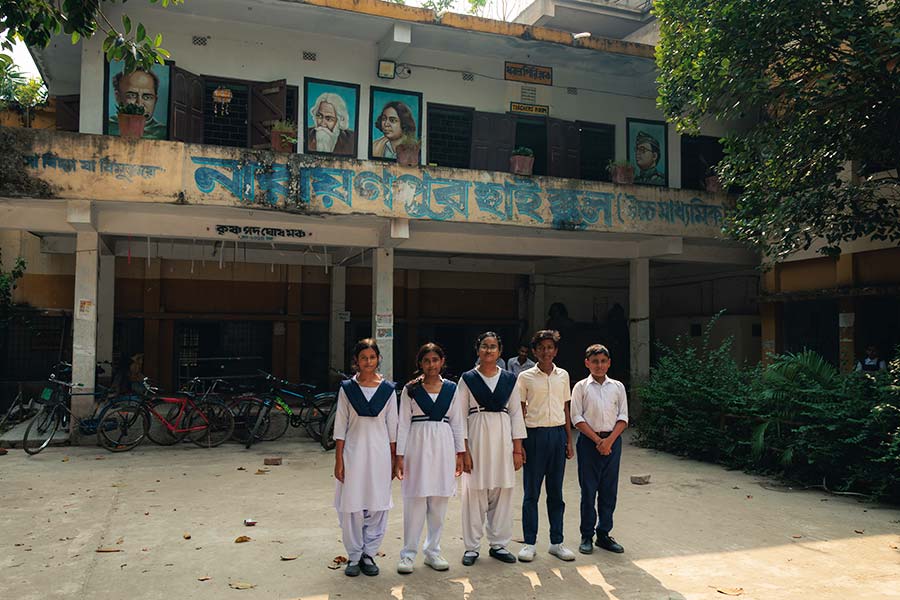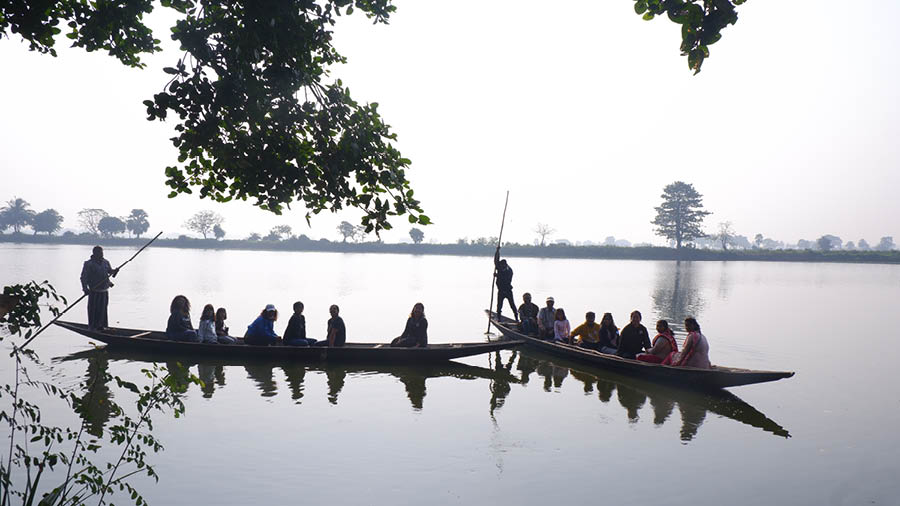The East Kolkata Wetlands are often referred to as the ‘lungs of the city’. The past decade has seen them face danger, with urbanisation threatening to envelop the green cover in a cloud of smoke. However, the youth from the wetlands have risen to the occasion, strengthening the voice for their home’s preservation — with art as their primary tool.
This art initiative started around 2017, when Nobina Gupta of Disappearing Dialogues started conducting nature workshops in Bamanghata High School and Kheyadah High School, both of which are situated within the wetlands.
“Initially, it was very difficult to communicate the essence of the wetlands to students, and they weren’t particularly engaged in the workshops. I decided to use art as a medium to communicate,” says Nobina. An artist herself, she started an initiative titled Nature Explorer Labs, where she would go with the students into the heart of the wetlands, and encourage them to sketch and draw whatever they observed. She adds, “The students were much more expressive with art, and it was surprising how each of them had their own voice. They would also bring back some materials for nature journaling. These excursions fostered the first relationship between art and ecology in the region.”
Soon, art grew from a medium for expression to a tool for awareness.
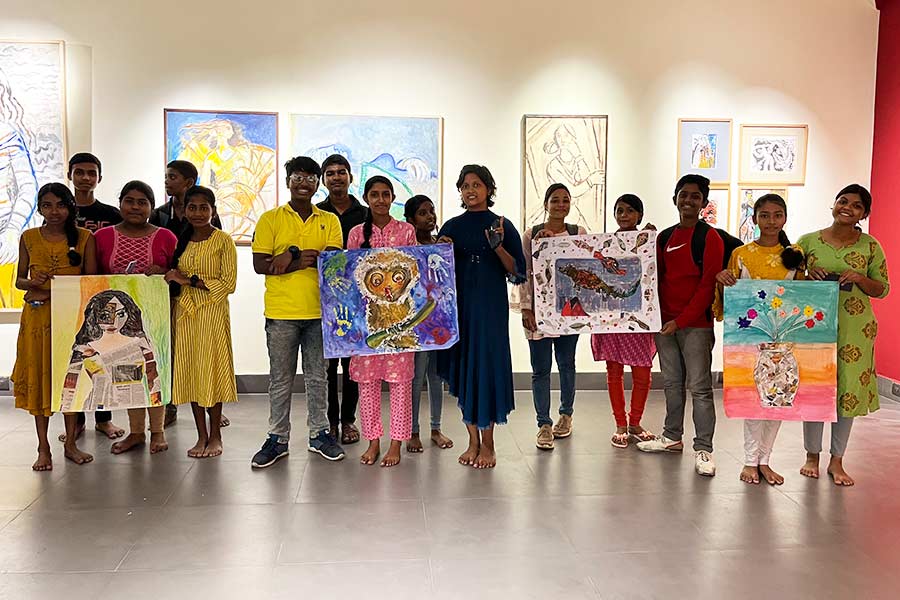
The students are engaging with the works of artists like Jogen Choudhury and (in picture) Shanu Lahiri
Sujon Sardar, a student of Bangabasi College, had never formally learnt painting, but had a penchant for drawing what he saw. He first discovered a love for the wetlands as a Class X student of Bamanghata High School, when he began drawing his surroundings under the mentorship of Disappearing Dialogues. Nobina noticed his gift with the brush and encouraged him to paint a wetlands-themed mural in his school. “I was used to painting the visuals I saw, without direction. But when it came to the wetlands, I started painting with my imagination.”
Nobina adds that a huge challenge was not only to change their perception of the wetlands, but of Kolkata too. “Back in 2017, many students had never been to Kolkata and imagined it to be a different world, sometimes even putting it on a pedestal,” she says. Nayna Naskar had a similar awakening. The student of Rabindra Bharati University remembers, “Growing up in the wetlands, I felt embarrassed that my father was a fisherman. I took art classes for 12 years, but I believe that I truly became an artist when my drawings started documenting my father’s stories. Art helped me mature and realise the value of where I come from, and brought the desire to hold onto it.”
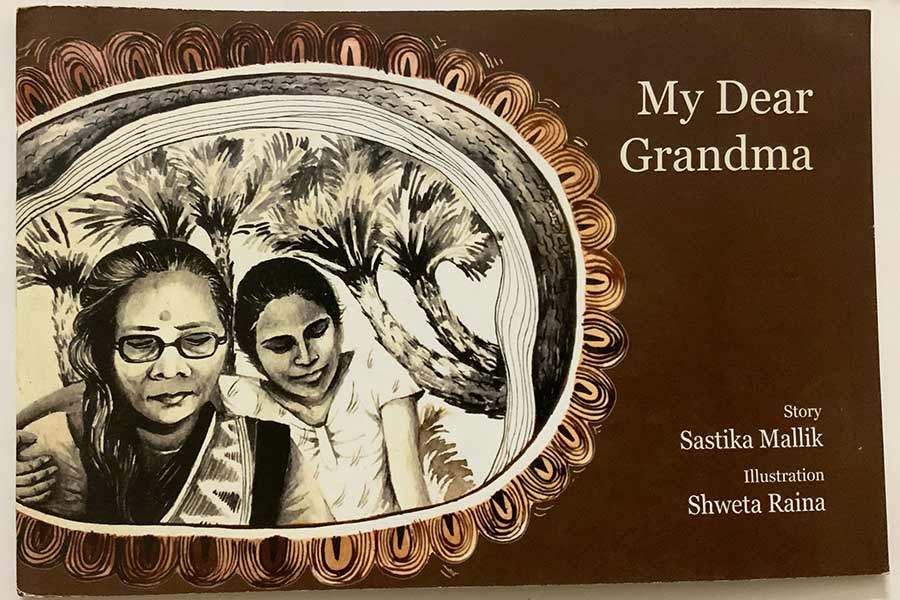
The students have received extensive mentorship from accomplished artists. (Above) Delhi-based artist Shweta Raina worked with a girl from the wetlands, Sastika Mallik, to illustrate a story she had written about her grandmother
Today, Nayna isn’t just a professional painter, but also tries to give back to the ecosystem that brought her up by teaching art to kids in the wetlands. “Art has made me realise that to do a job that is considered ‘respectable’, you don’t have to be in front of a computer. I try to impart the same teachings to my students. We enlighten them about the diversity of our flora and fauna through art and encourage them to not follow instructions, but let their imagination run wild,” Nayna adds.
She has already seen her efforts bear fruit, with the number of students increasing every year. Currently, she mentors over 20 children. “When I started dabbling in art a decade ago, it wasn’t as popular in the wetlands. Today, we have students complaining when we cancel classes for their Madhyamik exams, insisting that they still want to learn. Over the years, I have seen it appeal not just to students, but to parents, too!”

This painting by Sujon Sardar won him the first prize in an international competition organised by the Global Network of Water Museums
Sujon has personally experienced this. When his home caught fire, he started working with Disappearing Dialogues as a painter and muralist. “Earlier this year, Nobinadi asked me to send an entry for a project on environmental conservation. I didn’t know anything about it, but made a painting titled Protect Our Surrounding Environment,” he says. To Sujon’s surprise, he won the first prize in the fifth edition of ‘The Water We Want’ contest, organised internationally by the Global Network of Water Museums. “The prize money helped me rebuild my home. My parents were apprehensive at first, but seeing art help me provide for the family has made them supportive, too,” he beams.
In order to structure their skills better, Disappearing Dialogues frequently brings in artists to mentor the students and take their skills to the next level. Some prominent names include Abhisheka K. Gopal from Bengaluru, I. Majumdar from Santiniketan and Shweta Raina from Delhi. Raina has come to the city multiple times for workshops, having illustrated a story book created by the children, and guided them to create multiple murals. “When we did our first mural, the children had worked on paper, but not walls. However, they learnt it all on the job, without having to sit in a classroom. By blending narratives around fishing and making jaggery, they weren’t drawing things they saw, but parts of their life. It was very different from teaching students from an urban space, and I’ve seen their confidence grow over the years,” she smiles, adding that the project taught her a lot about the wetlands too.

The students have graduated from painting on canvases to painting on walls. Almost all schools in the wetlands house beautiful murals that advocate for environmental conservation. This is one such mural that was painted at Kheyadah High School by (L-R) Sujon Sardar, Nayna Naskar and Tanu Das
The children are also taken to exhibitions at spaces like Kolkata Centre of Creativity, the Indian Museum and the Goethe Institute, and engage with the works of celebrated artists like K. G. Subramaniam, A. Ramachandran, Meera Mukherjee, Jogen Choudhury and Shanu Lahiri. “The students are regularly taking their art outside the classroom and thinking about how to help the environment. The most important thing about these children is their spirit of collaboration. While we tend to be territorial, they would work together to create art,” says Lahiri’s daughter, Damayanti.
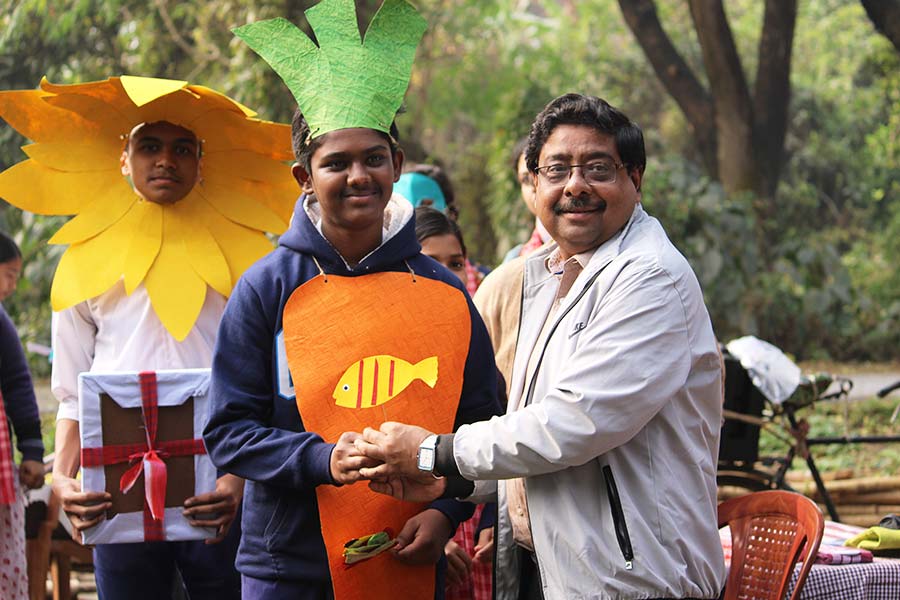
The children present their art across mediums at the annual Jolabhumi Utsab
Their art is also not restricted by medium. Students are making films, posters, costumes and even kantha-stitched garments, all to preserve the wetland’s rich legacy. One of the most unconventional art forms is exhibited by Nayna’s sister, Nibedita. Since she was a teenager, Nibedita found herself obsessed with the sounds and colours of migratory birds from the wetlands. “I used to find myself calling out to them the way they would call out to me. I didn’t realise when this turned into mimicry. Gradually, I got good at not only emulating their sounds, but their movements as they caught fish,” explains the student of Surendranath Women’s College. Nibedita regularly presents her mimicry of the wetland’s migratory birds to explorers from outside and several nature forums.
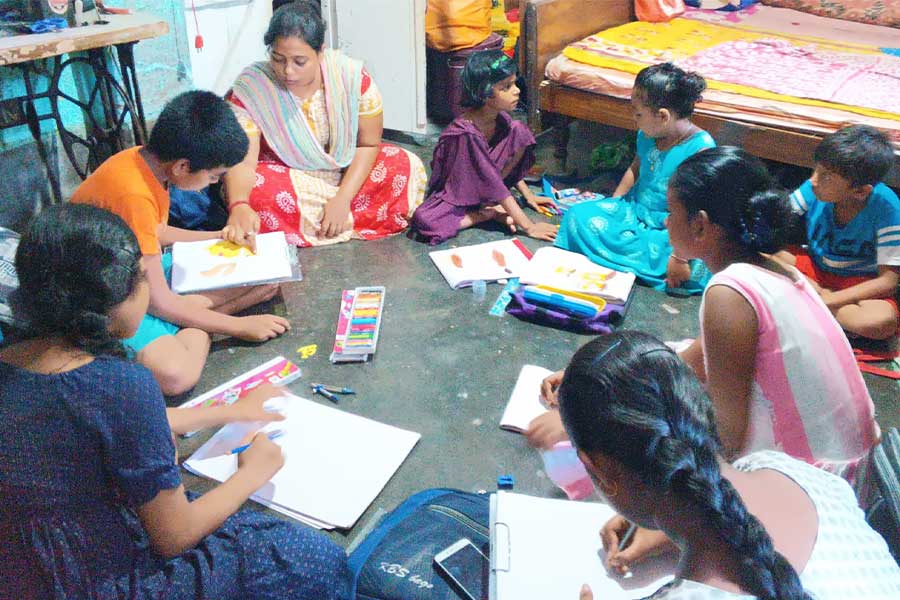
The students have an innate desire to give back. Nayna Naskar started dabbling in art over a decade ago, and today, she teaches art to over 20 students from the wetlands
The students showcase their work at the annual ‘Jolabhumi Utsab’, which not only exhibits their love for their natural surroundings, but also raises awareness about the politics of justifying deforestation in the name of development. At their very core, the art created by children in wetlands is aimed towards a very simple question: ‘Where are we headed to?’ As Nibedita poignantly laments, “If we all fell the trees, where will the birds build their nests?”

